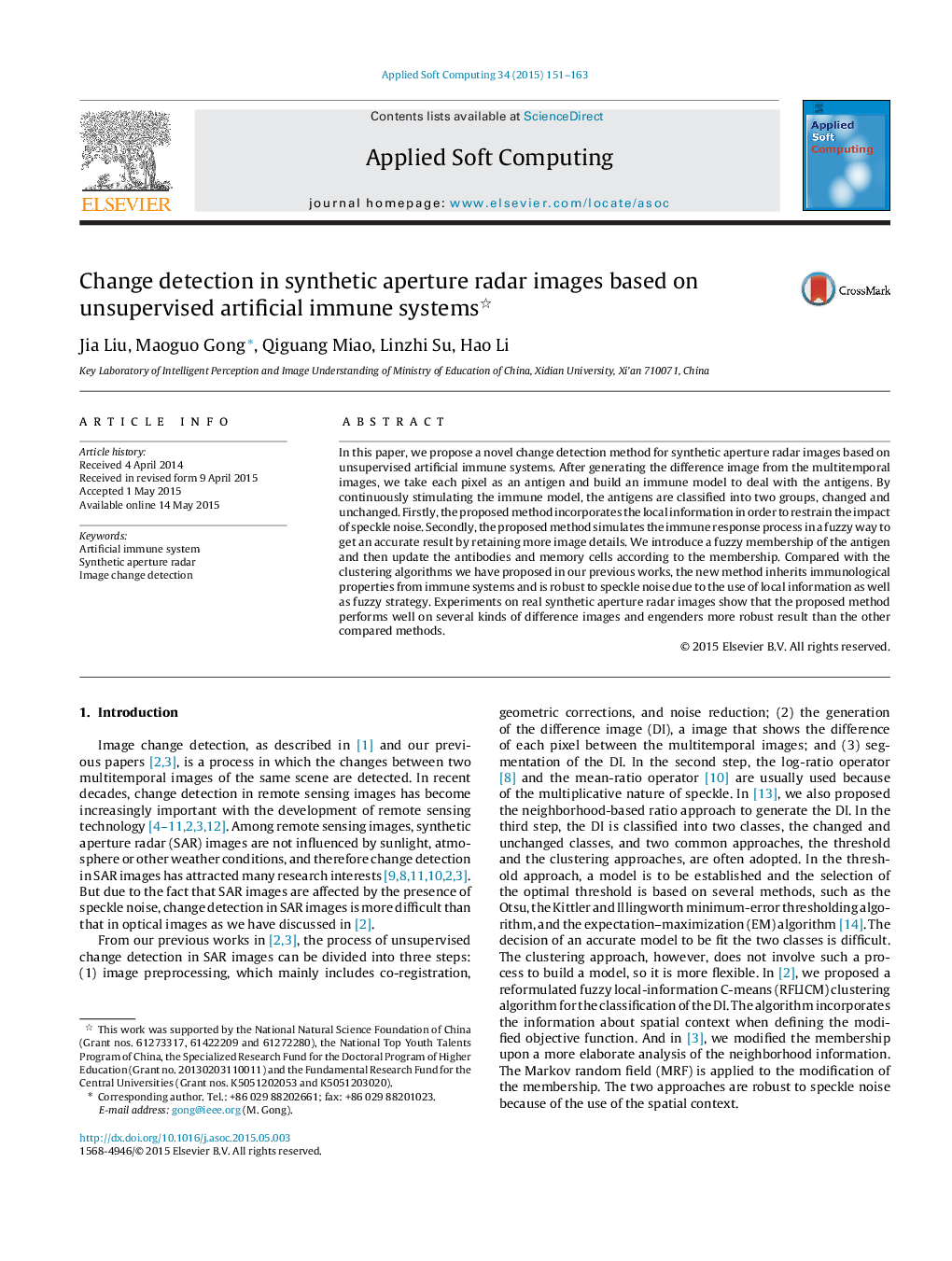| Article ID | Journal | Published Year | Pages | File Type |
|---|---|---|---|---|
| 494940 | Applied Soft Computing | 2015 | 13 Pages |
•We propose a novel change detection approach for synthetic aperture radar images based on unsupervised artificial immune systems.•To reduce the impact of speckle noise, we incorporate local information into antibody–antigen affinity.•We perform the immune response process in a fuzzy way to get an accurate result by retaining more image details.•The proposed model performs well on several kinds of difference images and can be applied to the tasks of change detection.
In this paper, we propose a novel change detection method for synthetic aperture radar images based on unsupervised artificial immune systems. After generating the difference image from the multitemporal images, we take each pixel as an antigen and build an immune model to deal with the antigens. By continuously stimulating the immune model, the antigens are classified into two groups, changed and unchanged. Firstly, the proposed method incorporates the local information in order to restrain the impact of speckle noise. Secondly, the proposed method simulates the immune response process in a fuzzy way to get an accurate result by retaining more image details. We introduce a fuzzy membership of the antigen and then update the antibodies and memory cells according to the membership. Compared with the clustering algorithms we have proposed in our previous works, the new method inherits immunological properties from immune systems and is robust to speckle noise due to the use of local information as well as fuzzy strategy. Experiments on real synthetic aperture radar images show that the proposed method performs well on several kinds of difference images and engenders more robust result than the other compared methods.
Graphical abstractWe present two artificial immune models in mutitemporal synthetic aperture radar images change detection. The first model, as shown in Fig. (a), simulates the immune process to classify pixels in the difference image into two classes, changed class and unchanged class. The ag is one of the pixel and its affinity with antibodies and memory cells contains local information to reduce the impact of speckle noise. The second model, shown in Fig. (b), executes immune process in a fuzzy way to improve the accuracy of change detection results. Figure optionsDownload full-size imageDownload as PowerPoint slide
